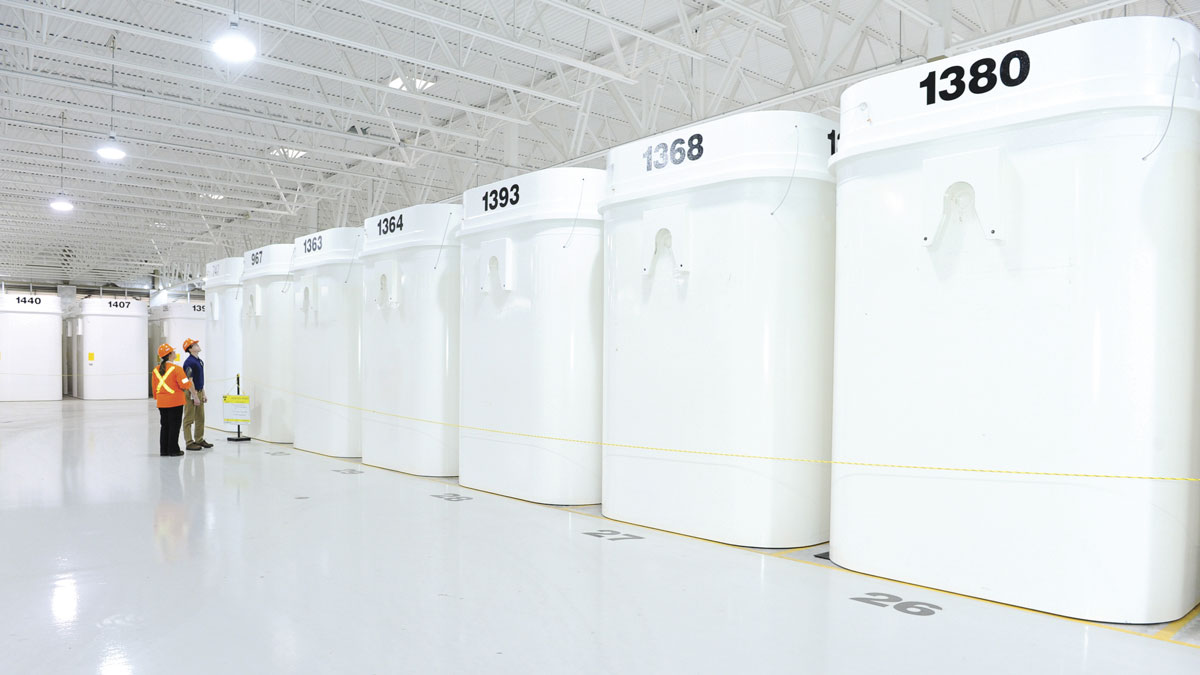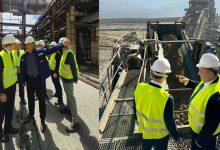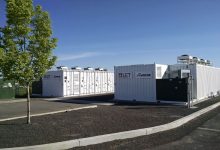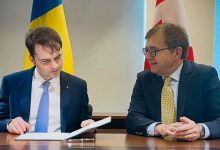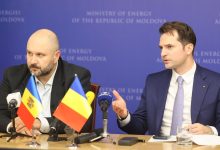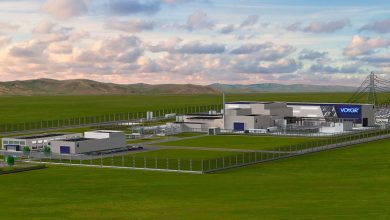Romania to Build New Radioactive Waste Repositories
The National Nuclear Power Company (SNN) wants to pay up to RON 8.34 million, excluding VAT, to find out what issues relevant to environmental protection it will have to develop in the Environmental Impact Report for the refurbishment project of Unit 1 at the Cernavoda Nuclear Power Plant and the expansion of the Interim Spent Fuel Storage Facility (ISFSF).
To ensure two duty cycles for Units 1 and 2, 37 more storage cells are needed. There are currently 11 cells in operation, with an investment of EUR 39.8 million for their construction. In parallel, the National Agency for Radioactive Waste Management has started the procedures for the construction of two more radioactive waste repositories, which will cost close to three billion euros. The authorities estimate that the two reactors at the Cernavoda Nuclear Power Plant will produce 525,000 of spent fuel bundles over their lifetime, by 2049 and 2059 respectively.
The disposal of radioactive waste is one of the sensitive issues related to nuclear energy. We are talking about clean energy, but it leaves behind more or less radioactive waste. They cannot be disposed of completely, only treated and stored somewhere as far away as possible.
Radioactive waste from the Cernavoda NPP is currently being stored in an interim repository and will later be stored in a deep, permanent repository.
Romania now wants to expand the interim storage site at Cernavoda, as the state spends around EUR 130 million a year on radioactive waste management, according to the national radioactive waste management strategy adopted this year. According to the same strategy, the interim storage facility at Cernavoda has a storage capacity of 1,408 cubic metres, of which half was occupied in 2021, but it will be filled by 2026.
The proposed expansion project for the interim storage facility envisages the construction of new modules for the storage of spent nuclear fuel bundles so that the number of bundles can be gradually increased by 37. Calculations show that the size of the site will increase from about 24,000 square metres to about 40,000 square metres.
A few years ago, the estimated cost of the ISFSF was EUR 500 million, taking into account the scenario in which the final deep repository would not be ready by 2055.
Between the lines
The two operating units of the Cernavoda NPP produce about 100 cubic metres of low- and intermediate-level radioactive waste per year.
Larger quantities of LILW-SL (Low- and intermediate-level short-lived) radioactive waste will be produced in the future when CANDU reactors are refurbished to extend their operating life.
The refurbishment of each reactor is expected to produce about 1,300 cubic metres (unconditional volume) of LILW-SL radioactive waste. This radioactive waste from the refurbishment will largely consist of metal reactor components such as pressure tubes, Calandria tubes and associated components, plus smaller amounts of non-metallic solids and liquids.
At present, the spent nuclear fuel from the two reactors is stored for at least six years in each reactor’s special pool in liquid form, and then processed to a dry, solid form. It is then stored in the Interim Spent Fuel Storage Facility at Cernavoda.
Action plan for the construction of the deep repository is being prepared
The National Agency for Radioactive Waste Management has launched a tender for the procurement of “Services for the development of an Action Plan for the implementation of a Deep Geological Repository in Romania”. This would be the final repository for low and intermediate level radioactive waste, but which is long-lived waste, high-level radioactive waste and spent nuclear fuel.
The location has not yet been determined, but the government estimates the cost of the project at EUR 2.8 billion.
The last spent nuclear fuel will be produced from Unit 4 in 2076 and will take at least seven years to cool and then the time to be packed. As a general planning assumption, this last spent nuclear fuel will be available for disposal at the earliest around 2085, the National Radioactive Waste Management Strategy states. On this basis, and to allow for a 20-year operational period, it is not necessary for the geological repository to start storage operations before 2065. This is about 20 years later than the estimated earliest possible date for opening a geological repository. On this basis, an indicative timetable of key dates for the geological repository implementation program has been established.
It is assumed that the repository site is chosen around 2055, becomes operational in 2065 and storage is completed around 2085.
Storage can however be deferred for longer if there is long-term intermediate storage capacity.
Green light for the Saligny repository
Following the request of the National Agency for Radioactive Waste Management, the Environmental Authority of Constanta decided in July to accept the environmental report and issue the environmental permit for the Zonal Urban Plan of the final low- and intermediate-level waste repository (LILW), in the unincorporated area of Saligny commune, Constanta County.
The repository will be built on an area of 42 hectares and will have a maximum storage capacity of 122,000 cubic metres of such waste. It will have a total of 64 storage cells and the plan is to have the first eight cells completed by 2028, at an estimated cost of EUR 75 million.
Radiological impact assessment on population health
The cost of refurbishing Unit 1 is estimated at EUR 1.85 billion, not including financing costs and discounting for inflation at the date the refurbishment contract is signed. Unit 1 is expected to be back in operation in 2029. The tender organized by Nuclearelectrica is due to take place on November 8.
As regards the refurbishment of Unit 1 of the Cernavoda NPP, the aspects relevant to environmental protection to be developed in the report requested by Nuclearelectrica will be analysed according to a guideline now being prepared by the Environment Agency on the basis of national legislation, public consultations conducted at national level and the results of cross-border consultations (with Bulgaria, Ukraine, Serbia, Hungary, and the Republic of Moldova).
With regard to human health, according to the study assessing the radiological impact on the health of the population generated by the operation of the Cernavoda NPP, the estimated radiological impact on the health of the population in the 30 km zone generated by the operation of the Cernavoda NPP under normal conditions falls into the very low risk category: one in 100,000 people and one in 10,000 people are at risk of developing cancer during their lifetime if the two projects are carried out.
The environmental authority also stresses that the impact on flora, fauna, and soil during the implementation of the two projects will be insignificant.
30 more years of life
Refurbishing Unit 1 means another 30 years of operation after 2029, at less than half the cost of a new nuclear reactor.
In terms of cost, and hence subsequent market impact, a 2020 Nuclear Energy Agency (NEA)-OECD study showed that energy produced by extending the lifetime of nuclear units has the lowest cost of all sources, including renewables. Thus, the cost of energy produced by a retrofitted nuclear power plant was USD 32/MWh, by wind farms was USD 50/MWh, and by solar parks was USD 94/MWh.
The refurbished Unit 1 will also produce ‘clean’ energy, avoiding the release of around 6 million tons of CO2 per year, thus contributing to achieving decarbonization targets.
The refurbishment will consist of replacing the existing reactor assembly components and rehabilitating/upgrading the systems on the nuclear and conventional sides of the plant, including the provision of dedicated space on the radioactive waste pre-storage side.


